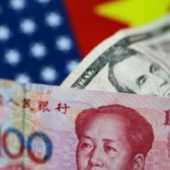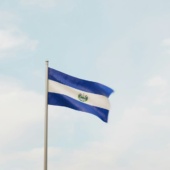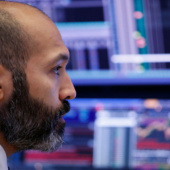HodlX Guest Post Submit Your Post
The concept of ‘quadratic funding,’ which Vitalik Buterin discusses during his conversation with Lex Friedman, suggests that there is a mathematical way to return some portion of money to those who engage in philanthropy, or in the case of companies, allocate a percentage from a common pool.
This idea is intriguing from a psychological perspective primarily because it interacts with one’s ego or desire for material possessions, potentially increasing activity in these areas.
However, I believe there is another interpretation of this concept. It revolves around the idea of distributing wealth more evenly across the human population.
Before you dismiss this idea, please allow me to explain further.
In chemistry, there is a concept called a ‘buffer,’ which is a substance that remains stable regardless of what is added to it.
Imagine adding a few drops of blue liquid like food coloring into a cup of yellow water. You would expect the color to change, wouldn’t you? But here’s the twist it doesn’t. This is because the substance resists change.
Applying this concept to economics, we could create a society that resists economic fluctuations.
Admittedly, this idea might sound extreme, as the only way to create such a ‘buffered’ society would be to allocate a small percentage of each person’s earnings into a global pool, redistributing it to those in need.
You might think this sounds like robbery, right? After all, you worked hard for your money, and now someone wants to take it from you. Well, you’re not entirely wrong.
So, after considering this idea from every angle, the only solution I could come up with is to take only a ‘very small percentage’ from each transaction something like 0.001%. This small amount would apply to every single transaction.
However, society might perceive this as rewarding laziness while hardworking people are being penalized.
But because this redistribution would be programmed to make only minor adjustments, even if you earn much more than others, you would still be compensated if you lost, say, 0.0003% on a bad day. This way, the money would come back to you.
In this way, we could create a buffered society, where the changes in one individual’s earnings would be balanced by changes in another’s, maintaining overall economic stability.
A buffered society could help establish a global trust fund, improving conditions even in the most remote parts of the world.
Yes, it might take centuries to stabilize human earnings across the planet and create a new normal for salaries, regardless of where you’re from.
But at least this approach offers a chance to allocate resources from a human-centric perspective rather than a country-centric one.
To achieve this goal, I believe the only viable method would be to rely on an AI (artificial intelligence) system that manages distribution within a blockchain framework.
Aleksandra Bolotova is a mathematics and physics aficionado originally from Russia, currently living in New York City. Having lived and studied in Spain and the UK, she brings a diverse perspective to her academic interests. She explores the intersection of physics and psychology, focusing on the connections between macro and micro sciences. Aleksandra has pursued coursework at Fordham and Harvard Universities, driven by a curiosity to bridge the gaps between scientific disciplines.
Follow Us on Twitter Facebook Telegram

Disclaimer: Opinions expressed at The Daily Hodl are not investment advice. Investors should do their due diligence before making any high-risk investments in Bitcoin, cryptocurrency or digital assets. Please be advised that your transfers and trades are at your own risk, and any loses you may incur are your responsibility. The Daily Hodl does not recommend the buying or selling of any cryptocurrencies or digital assets, nor is The Daily Hodl an investment advisor. Please note that The Daily Hodl participates in affiliate marketing.
Featured Image: Shutterstock/Athitat Shinagowin/Sensvector
















